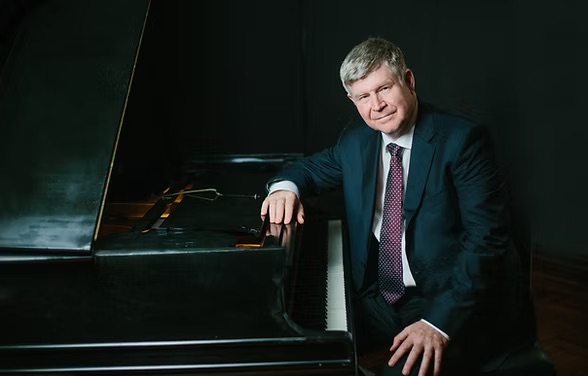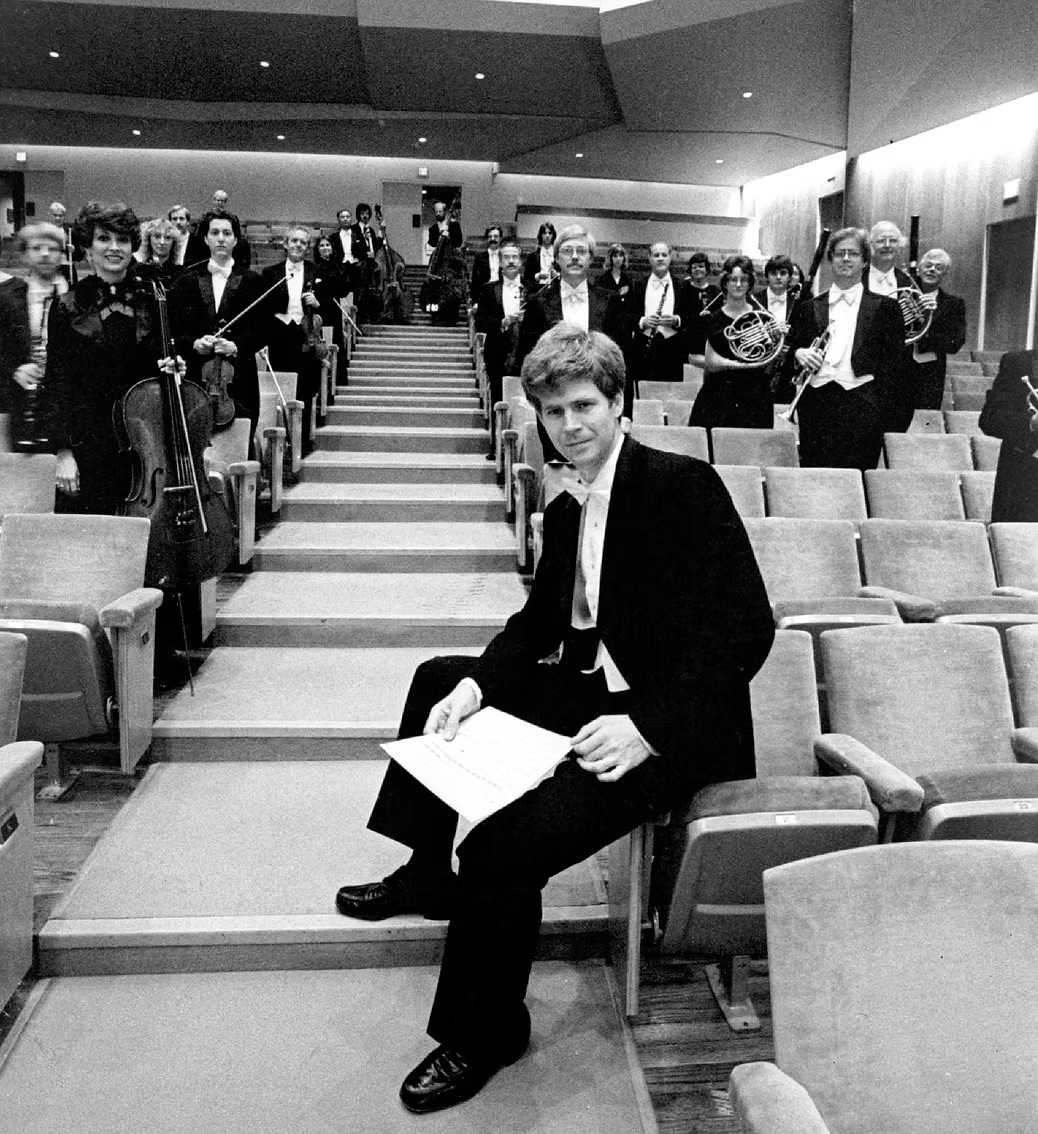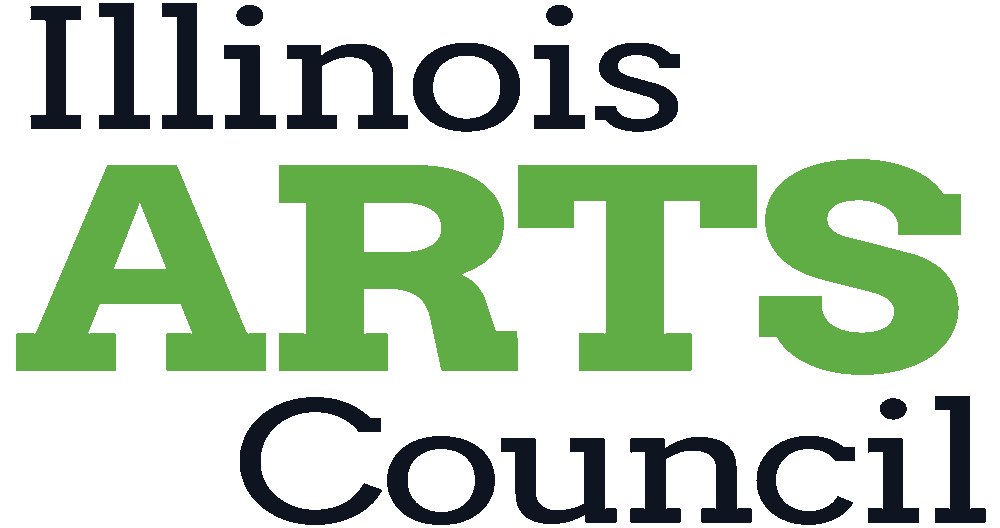Pianist Ian Hobson Celebrates Golden Anniversary

On November 12, 1975, Ian Hobson gave his first piano recital in Urbana. Hobson had been hired that May for a one-year appointment to the piano faculty at the University of Illinois while he finished his doctorate at Yale. Little did he know that this one-year appointment would quickly turn into a tenure-track position, and that he would make Champaign-Urbana his home long-term while his performing career took off. He became a fully tenured professor in 1983 and founded Sinfonia da Camera the following year.
To celebrate those auspicious beginnings, Sinfonia da Camera will present a special benefit concert marking the exact 50th anniversary of Hobson's first recital. Hobson, who still serves as Sinfonia's music director, will perform some of his favorite solo piano repertoire, including one piece from his 1975 recital, Chopin’s Scherzo No. 4.
The month before his first Urbana recital in 1975, Hobson had advanced to the quarterfinals of the IX International Chopin Piano Competition in Warsaw, Poland. Launched in 1927 and held every five years since 1955, the Chopin Competition is considered one of the most prestigious classical music contests in the world. Hobson opened his competition program with Chopin’s Scherzo No. 4.
Although the rest of Hobson’s 2025 program will not include repeats from his 1975 recital, some of the same composers will be represented. As in 1975, he will open with a Beethoven sonata—this time the famous “Waldstein” Piano Sonata No. 21 in C Major, Op. 53, in place of Piano Sonata No. 4 in E-flat Major, Op. 7.
Hobson has a long history with the “Waldstein,” having first played it when he was 15. Hobson calls the sonata “symphonic in scale” and “very virtuosic,” with plentiful scales and arpeggios. After a slow introduction in F major in lieu of a second movement, the final Rondo exploits the damper pedal to great effect, creating what Hobson calls a “misty environment” by blurring several different harmonies. The Rondo is also innovative in its use of octave glissandi in each hand—something much easier to achieve on the pianos of Beethoven’s day than on heavier modern keyboards. Some pianists have devised clever workarounds for this technical challenge, as can be seen in the video below.
Next on the program is Robert Schumann’s Davidsbündlertänze, Op. 6. The expansive set of 18 character pieces marks the culmination of Hobson’s complete Schumann project, in which he has played all the solo piano and piano chamber music by the composer. This feat has taken about six years, interrupted by the pandemic. (He just performed Schumann’s Piano Concerto with Sinfonia da Camera on October 18, conducting from the piano.)
Davidsbündlertänze embodies Schumann’s contrasting alter egos, Florestan and Eusebius, with each of the 18 movements designated as one or the other, or in some cases, both. “He really shows you the different sides of his personality in a very intimate way,” Hobson explained. Although the piece can be a bit schizophrenic at times, “it’s very poetic,” he said. In fact, Hobson said it is probably his favorite piano piece by Schumann.
After Chopin’s Scherzo No. 4, Hobson will play Ravel’s Gaspard de la Nuit, a fantastical suite in three movements. After the evocative waves of the water nymph in “Ondine” comes the macabre image of the gibbet to the ominous sound of tolling bells in “Le Gibet.” The fiendishly difficult final movement, “Scarbo,” depicts a malicious imp who flits about in the night making mischief. Gaspard de la Nuit is another piece Hobson learned when he was a young pianist, studying the work under Vlado Perlemuter and Jeanne-Marie Darré, two illustrious French pianists who had studied with Ravel.
The program ends on a lighter note with Rachmaninoff’s piano transcriptions of violinist Fritz Kreisler’s Liebesleid und Liebesfreud. Hobson had ended his 1975 concert with Rachmaninoff as well, playing five of his preludes.

Hobson with Sinfonia da Camera in 1984
When asked whether his interpretation or understanding of pieces he’s played for decades has changed or deepened over the years, Hobson replied, “Oh, absolutely. I don't know how noticeable that would be, because that’s something that is in the eye of the beholder or the ear of the listener, but I certainly feel it myself. That’s the whole purpose of study and reflection and developing a deeper performance ethic.”
Fifty years on from his first recital on the Illinois campus, Hobson says there is still music he wants to explore, from classics he has yet to perform to contemporary music. “Although I am returning to these pieces in this recital that I know well and love,” Hobson said, “I always enjoy a new challenge. If somebody came to me and said, ‘Here’s a new piano concerto that I’ve just written for you,’ I would say, ‘Great!’ and then I would turn my attention to that.”
“I enjoy the great masterworks—the Brahmses and the Beethovens—but there’s always something new to discover,” he continued. “For example, last season we did the Mozart Requiem, which I had never done before. I had listened to it, of course, and I knew something about it. But to really delve into it and to get the opportunity to perform it in the Great Hall is really an experience.”
The remainder of Sinfonia da Camera’s 2025–26 season contains a mix of classics and contemporary music, from their festive winter concert on December 13 at the Virginia Theater and an all-Rachmaninoff program on February 28, to a concert of American music featuring a brand-new concerto for alto saxophone by Lowell Liebermann on April 18.
Tickets for Hobson’s recital at the Krannert Center for the Performing Arts are selling fast, particularly for VIP seats on the stage of the Great Hall. The salon-style seating not only gives you unparalleled views of the action but also comes with complimentary gourmet desserts and a sparkling beverage. Alternatively, you can sit in the choral balcony, where the acoustics of the Great Hall will envelop you in sound.
Tickets can be purchased for “Sinfonia da Camera: Golden Anniversary Benefit Concert” on Krannert Center’s website.



